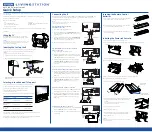
10
ABB
Figure 6: Schematic Diagram
Excessive transformer reactance (refer to Fig. 5) will result in
a lagging voltage at the burden, and vice versa.
When a straight line is being approached on the oscilloscope,
the output voltage shall be checked and readjusted to the
desired value. The final setting is with the correct output
voltage and with the oscilloscope trace the closest possible
to a straight line, bearing in mind that differences in wave
form of the two voltages will prevent a perfect straight line.
To check for polarity correctness, connect terminal S3 to the
ground of the reference voltage and then check the voltage
between S1 terminal and the polarity terminal of the reference
voltage. With correct polarity this voltage will be zero and
with reversed polarity the voltage will be approximately 230.
If an oscilloscope is not available then use two voltmeters,
one high scale and one low scale, and with these measure
the difference or error voltage and the output voltage. This
plan, which uses the difference voltage, pre-supposes that
the reference voltage is of the exact magnitude, which is
desired for the adjusted device.
In the case of delta-connected three-phase burdens, it is
necessary to make preliminary or approximate adjustments
of each device first and to then re-check and trim each device
one or more times until the three phase voltages to ground
are equal and each in phase with its reference voltage.
When final adjustment is accomplished, with the burden
connected, check voltage H2-H3. This voltage shall not
exceed 172V. Voltage in excess of 172V indicates excess
burden connected to the device and excess voltage on
the primary of the transformer.
Calculation of Approximate Adjustment
If the capacitance values C1, C2 and C3 of Fig. 6 are known,
then it is possible to calculate the approximate adjustment
of a device when used with a particular bushing at a specific
line voltage. It is assumed that the burden is corrected to
substantially unit power factor. For this purpose the nominal
values of C3 (in the potential device) are,
Device
C3
S#3D69822G01 2000pF
S#3D69822G02 3000pF
All others
Check the device for value
The values of C1 and C2 shall also be used in picofarads.
If C4 is obtained by measuring a bushing mounted in a
grounded structure, it will contain appreciable stray
capacitance to ground. Since this stray capacitance is not
effective in the circuit of the potential device it is more
accurate to use 0.85C4.
Содержание PBA2
Страница 9: ...9 ABB Figure 5 Curve of Ohms versus Turns of Reactance ...
Страница 15: ...15 ABB Notes ...






























